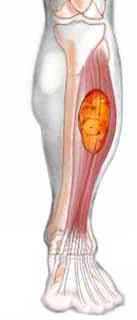| Treatment of Sarcoma
The
best, current information on treatment is from the NCCN guidelines (go here).
In general patients are treated with surgery often combined with radiation
(go here) and often chemotherapy (go
here).
for the role of radiation go here and side effects of
radiation
here
Typical radiation dose and
technique from RTOG 0630, the
fields are smaller than before, in the older RTOG trials (RTOG 95-14) the
radiation fields were much larger (go here
and here).
the most effective chemotherapy drugs include
adriamycin, ifosfamide or DTIC, with some newer drugs (e.g. Gleevac (Imatinib)
or Sutent (Sunitinib) for GIST tumors, go
here).
for a discussion of adjuvant chemotherapy go here
for a discussion of retroperitoneal sarcoma go here.
other reviews on treatments go:
here,
here,
here,
here,
here
|
